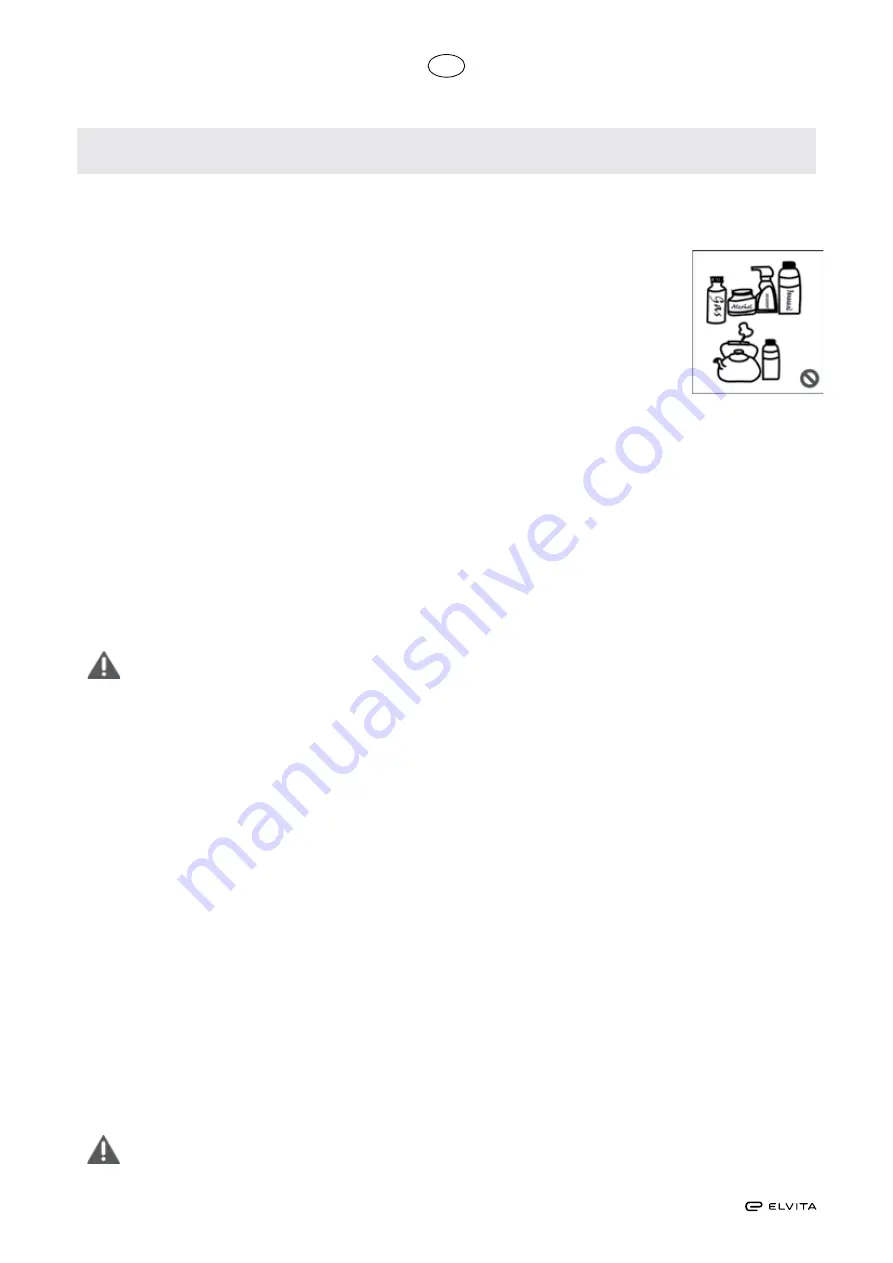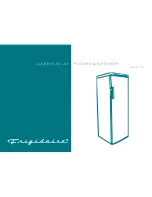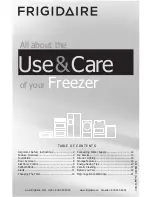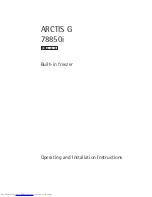
GB
36
Maintenance and care
4.1 General cleaning
•
Dust behind the appliance and on the floor should be removed regularly to improve cooling performance and save
energy.
•
Check the door gasket regularly to make sure there is no debris on it. Clean the door gasket with
a soft cloth dampened with soapy water or diluted detergent.
•
The interior of the refrigerator should be cleaned regularly to avoid odour.
•
Turn off the power before cleaning the interior, and remove all food, drinks, shelves, drawers,
etc.
•
Use a soft cloth or sponge to clean the inside the refrigerator, using two tablespoons of baking
soda in a quart of warm water. Then rinse with water and wipe clean. After cleaning, open the
door and let the interior dry naturally before turning on the power.
•
For areas that are difficult to clean in the refrigerator (such as narrow channels, gaps or corners), it is recommended
that you wipe them regularly with a soft cloth, soft brush, etc., and if necessary in combination with additional tools
(such as narrow brushes) to ensure no contaminants or bacterial accumulation in these areas.
•
Do not use soap, detergent, scouring powder, spray cleaner, etc., as these may cause odours in the interior of the
refrigerator or contaminate food.
•
Clean the bottle rack, shelves and drawers with a soft cloth dampened with soapy water or diluted detergent. Dry
with a soft cloth or dry naturally.
•
Wipe the outer surface of the refrigerator with a soft cloth dampened with soapy water, detergent, etc., and then
wipe dry.
•
Do not use hard brushes, scourers, wire brushes, abrasives (such as toothpastes), organic solvents (such as alcohol,
acetone, banana oil, etc.), boiling water, acid or alkaline cleansers, which may damage the appliance surface and
interior. Boiling water and organic solvents such as benzene may deform or damage plastic parts.
•
Do not rinse directly with water or other liquids during cleaning to avoid short circuits or affect electrical insulation
after immersion.
4.2 Defrosting
•
Turn off the appliance.
•
Remove the food from the freezer and place it somewhere cool to prevent food from spoiling.
•
Clear the drain pipe (use a soft material to prevent damage to the liner). Prepare the water containers for defrosting.
(Do not forget to clean the compressor compartment water tray, avoiding spillage on the floor.)
•
You can allow the appliance to defrost naturally, and use an ice scoop to remove the frost (use a plastic or wooden
ice scoop, to avoid damaging the liner or pipe).
•
You can also use the appropriate amount of hot water to speed up defrosting, and a dry towel to mop up the water
from defrosting.
•
After defrosting, place the food back in the compartment and turn on the appliance.
Please unplug the refrigerator before defrosting
and cleaning.
The appliance should be allowed to run continuously once it is started. Generally, the operation of the
appliance should not be interrupted; otherwise the service life may be impaired.
4.3 When the appliance is disconnected from the
power supply
•
Power cut: If there is a power cut, even if it is in summer, food can be kept safely inside the appliance for several hours.
During this period, the door should be opened for the shortest time possible, and no more fresh food should be put into
the appliance.
•
Long periods of non-use: The appliance should be unplugged and then cleaned, and the doors should be left open to
prevent odour.
•
Moving: Before moving the appliance, remove all the items from inside, secure the glass partitions, vegetable holder,
freezer compartment drawers, etc. with tape; screw in the levelling feet; close the doors and seal them with tape.
During moving, the appliance must not be laid upside down or horizontally, or be subjected to vibration. The appliance
must not be tilted by more than 45° while being moved.
Содержание CKF4143V
Страница 21: ...21 SE...
Страница 41: ...GB 41...
Страница 61: ...NO 61...
Страница 81: ...DK 81...
Страница 101: ...FI 101...
















































